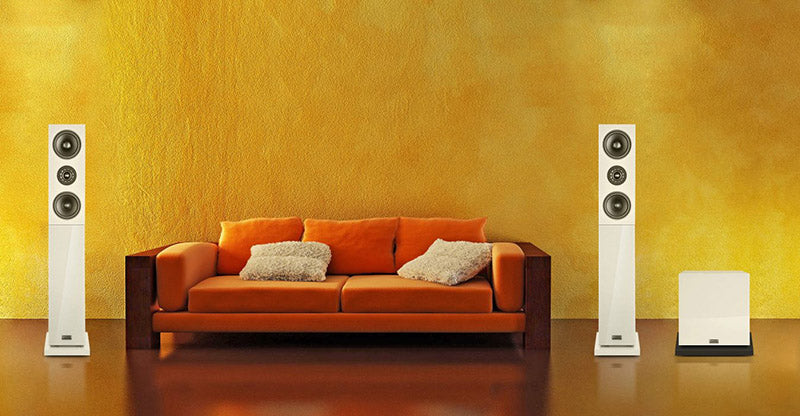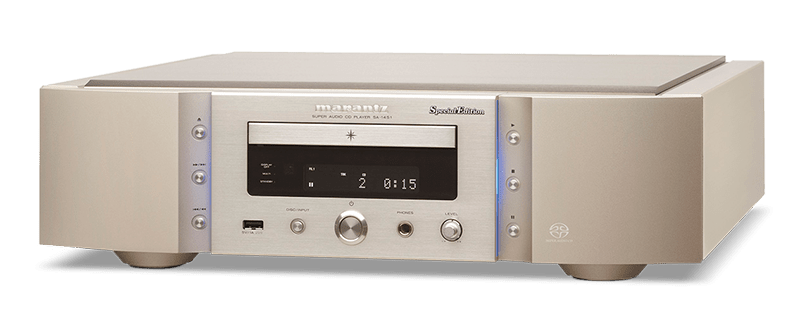Streaming has become the most popular audio format. It’s convenient. It’s easy. You can move immediately from one recording to another. But Gilad Edelman, in a recent article for Wired magazine, makes a case for continuing to listen to CDs and LPs:
“Streaming platforms just aren’t designed with the serious music fan in mind. Back when you had to buy a physical album to listen to it, you really listened to it— even the songs you didn’t like at first…In the pre-streaming era, I’d buy an album and listen to it over and over. With [a digital music service] I often discover a new artist, get really excited about them, and three months later forget about their existence entirely. If it doesn’t occupy space on your wall, it may not occupy space in your mind….”
“Where streaming turns songs into something ephemeral and interchangeable, a record is very much a thing. It’s big. You can hold it in your hands and admire the artwork on the sleeve. If the problem with [a web player] is the lack of friction [involvement], well, vinyl records are about as frictiony as you can get. They literally require friction to function….”
“This is not a nostalgia play. Vinyl has the nostalgia market cornered. But if you look past the visual aesthetics, you’ll admit that CDs accomplish the essential function of turntables, vis-a-vis streaming, without the hassle. That is, they allow you to build a library.” [1]
In order to get the greatest amount of enjoyment from the CDs and vinyl you play, top-quality sound should be a priority. Superior sound can make listening more interesting, realistic, and involving. It enables you to hear greater directionality and clarity, more natural timbres, the ambience of the recording studio or concert venue, the interplay among musical parts, the space around performers, and details or even lines of music that are hidden when the reproduction is inadequate. [2] You’ll also want sound that’s in line with your taste – a little more of this, a little less of that – whether or not what you like is considered to be “accurate.”
So, if you’re a serious listener building your first audio system or upgrading an existing one, how do you go about putting together components that will give you the best listening experience? Here’s a brief history of my search for superior sound that might help guide your own decisions when building or modifying a system that’s right for you.
The story
Once upon a time, several decades ago when I moved into my first New York City apartment, I didn’t want to set up a home music system centered on a boombox purchased from Crazy Eddie’s electronics discount store. I bought what I believed to be a good, affordable serious listener’s starter kit: AR speakers and turntable, [3] a Dynaco amp and preamp, and a Dynaco FM tuner. To get the most natural sound I moved the speakers an inch here, a quarter of an inch there, figured out how far away from them I should sit, and how high the chair I sat on should be. I really enjoyed this all-tube aural equivalent of comfort food – a sound sometimes referred to as “chocolaty.” The equipment might not have had the greatest detail or state-of-the art-specs found in more expensive brands, but it did have qualities I liked: depth, width, and warmth, and every instrument or voice was smooth and round even if it wouldn’t quite sound that way in reality.
I needed one other item to complete my system: a reel-to-reel tape recorder. The manager at a well-known audio store made two good recommendations: either a Revox or Tandberg tape deck. I listened to both and chose the Revox because of its sound, aesthetics, ability to handle 10-1/2-inch reels, and company reputation. The Revox sounded clear and expansive; the Tandberg had a quieter background and sounded like the performers were more forward on the soundstage (i.e., closer to the listener). The Revox came with a lifetime warranty that turned out to be very useful: the recorder I received was mechanically unreliable. After four trips to the repair shop, I finally exchanged it for a Tandberg, which was trouble-free for a couple of decades.
 A classic Revox A77 reel-to-reel tape deck, introduced in 1967. Courtesy of Wikimedia Commons/s_p_a_c_e_m_a_n.
A classic Revox A77 reel-to-reel tape deck, introduced in 1967. Courtesy of Wikimedia Commons/s_p_a_c_e_m_a_n.When solid-state equipment became available I traded the Dynaco amps for a solid-state integrated amp with a variety of bells and whistles, including a tuner, bass boost, mute, and tone controls. I found the sound cold and constricted and didn’t live with it for very long, despite its versatility. I traded that and some other equipment for Conrad-Johnson tubed amps that had even greater warmth and detail than my original Dynaco equipment, [4] then eventually traded the C-J equipment for a Pathos Classic One Mk II hybrid integrated amplifier: a combination tube preamp-stage and solid-state power stage that, as one audio critic put it, “is one of those rare components that achieves a perfect balance of performance, style and value.” [5]
 Pathos Classic One Mk II integrated amplifier.
Pathos Classic One Mk II integrated amplifier.
After relocating to San Francisco, I discovered several high-end audio stores and a wide variety of equipment to choose from within walking distance of my new apartment. My electronic Philips turntable (which had replaced the AR) was replaced by a Bang and Olufsen turntable (a beautifully-designed piece of equipment whose sound turned out to lack body) which was replaced by a SOTA (with a fuller, more realistic sound), which was replaced by a Clearaudio Performance turntable. The AR speakers were traded for stand-mounted aluminum-honeycomb-enclosure Celestion speakers with a transparent upper and mid-range that almost made up for their lack of bass. The Celestions were followed by floorstanding Triangle speakers that projected a warm, clear sound, and were especially captivating when playing jazz and chamber music. As much as I enjoyed the Triangles, though, I always felt they didn't have enough power to support large orchestral music, so they, too, were eventually replaced – this time by Audio Physic Classic 10 speakers (tagline: “No loss of fine detail”) that are still part of my system.
 Audio Physic Classic 10 loudspeakers. From the Audio Physic website.
Audio Physic Classic 10 loudspeakers. From the Audio Physic website.
My first CD player was manufactured by ADS and had a more liquid sound than most of the other early digital players I had been auditioning. When SACDs started to appear, I bought (but had trouble carrying) a 39-pound Esoteric SACD/CD player. It was superb: transparent, detailed, airy, and “accurate.” I could hear the felt-covered wood hammers striking the strings inside a piano, the rosin on violin bows, and the individual hairs of brushes on drums during jazz performances. Every attack on every instrument being played was instantaneous, and every note hung in the air after being played. The detailed Esoteric reinforced the sound of my detailed Audio Physic speakers and I reveled in this combination until (you knew that was coming) once again, I needed some of the cozy warmth of tubes in my system, even if the sound might not be as accurate.
When the Esoteric started having tray problems years later, instead of repairing it I looked for a different SACD player and chose a Marantz SA-14S1, one of the company’s higher-end products that has some tube-like warmth yet plenty of detail. [7] The first time I played a jazz CD on the Marantz I discovered I was tapping my foot – something I don’t recall happening while listening to the Esoteric. I was so impressed by the Esoteric’s reproduction I had been focusing more on the sound itself than on the soul of the music.
My current system includes the aforementioned Pathos integrated amplifier and Clearaudio Performance turntable (that “guarantees absolute speed stability and pure pleasure in listening” according to the manual and I have no reason to disagree), a Fosgate Signature Phono Preamp (all tubes) with a seductive 3-dimensional sound, the Marantz CD player and Audio Physic speakers referred to above, an Audience Adept Response power conditioner to plug everything into, and an Audience power cord to connect the conditioner to the wall outlet (it’s true: wall outlets are noisy and “audiophile” power cords, interconnects, and speaker wires can reduce noise throughout a system and allow more detail to be heard).
 Fosgate Signature Phono preamplifier.
Fosgate Signature Phono preamplifier.There’s a new PS Audio SACD player [the PerfectWave SACD Transport – Ed.] I’m curious about. And speakers and amplifiers by other manufacturers I’d like to audition. Continuing the search for perfection is exciting, fun…and endless. Sometimes a change can be refreshing. But after decades of buying and trading components I’ve decided my time is better spent enjoying what I have. I’m pleased with my current mix and match, yin and yang, analog and digital system that also has great aesthetics I enjoy looking at every day. This system makes my foot tap. It draws me into the music. It has great sound and the sound qualities I enjoy most.
The moral of the story
Avoid building a system you think you should have. Whether you like chocolate (a tonal balance on the warmer side of neutral that has a rich sound), vanilla (a tonal balance on the cooler side of neutral that has exceptional transparency), or some other flavor, choose equipment you feel is just right for you.
[1] Gilad Edelman, “You Should Listen to CDs,” (Wired, 12/23/21).
[2] For example, after one of my many system upgrades, I was surprised to discover a musical line in Bartok’s Concerto for Orchestra I had never heard before because it had been obscured by equipment limitations.
[3] These “bookshelf” speakers were the perfect size for a studio apartment and could be placed on small stands and moved so they wouldn’t be blocked by furniture.
[4] The Dynaco and C-J amps often blew tubes and were costly to maintain. Contemporary vacuum tube equipment usually requires very little maintenance.
[5] Jeff Dorgay, TONEAudio magazine.
[6] I auditioned a larger-sized, positively-reviewed Triangle speaker that could handle orchestral music but lacked the transparent sound of my smaller Triangles, and would have been too large for my living room (they needed a greater distance between the speakers and listener in order for the sound to come together at the listener’s ears).
[7] Marantz was one of the best manufactures of vacuum tube gear before the company transitioned to solid-state designs. Even much of their solid-state equipment is notable for having a warm sound.
Header image: Marantz SA-14S1 SACD player.


